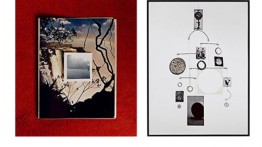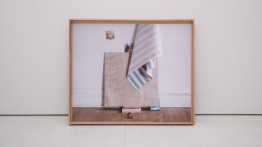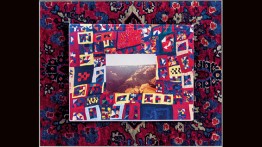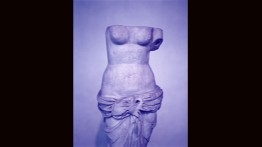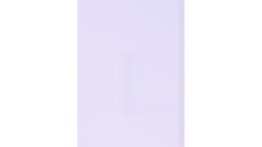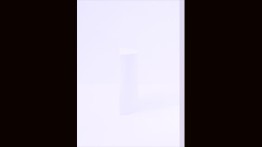Blurring the Edges of Photography: Art Alumnae Featured in Guggenheim Show
POSTED ON: March 9, 2016
Photo-Poetics: An Anthology, an exhibition currently at the Solomon R. Guggenheim Museum, includes work by two School of Art graduates, Leslie Hewitt '00 and Sara VanDerBeek '98. Both create photographs that use sculptural strategies to blur the line between image and physical space. On February 24, we talked to Ms. VanDerBeek at The Cooper Union where she is currently teaching. You can hear the entire conversation below. Later, we caught up with Ms. Hewitt after she gave a gallery talk at the Guggenheim.
Sara VanDerBeek
Leslie Hewitt
Born in 1977 and raised in Saint Albans, Queens, Leslie Hewitt absorbed the cultural and political sea changes of the 1960s and her work makes reference to the period in her use of images, books and magazines of the period. Ms. Hewitt, who earned her MFA in sculpture from Yale in 2004, does not see herself as a photographer, but as an artist who uses photographs in a sculptural way. "I like sculpture's tactile appeal and its immediacy, materiality and scale. And I always dealt with photos as something tactile, something haptic. To my parents' regret, I was always touching our photos, rearranging them," she said during a recent gallery talk at the Guggenheim.
Visitors to the exhibition can see work from Ms. Hewitt's series "Riffs on Real Time" (2006-09). These pieces are photographs of objects arranged in three layers: the first layer a snapshot, the second a text that saddles public and private spheres, and the third a ground plane—anything from a wood floor to a Persian rug. "Photography has become very virtual," she said. "And in a sense my "Riffs on Reel Time" is a bit of mourning of the photographic image's relationship to touch." Her work is not autobiographical, though viewers often think so because of the snapshots at the center of the pieces. But Hewitt, the daughter of a computer programmer, conceded that "our subconscious is full of meta-data that perhaps we're not aware of."
Also on view are some of her photo-sculptures, photographs of object arrangements. The framed photographs are set against a wall, playing with the viewer's sense of the image as one that is concomitantly a space to be entered and a flat object. "The work is made as an invitation. It rests on the floor to accentuate that," she said. Ms. Hewitt is interested in doubling both within an image and in real space. So, for instance, the orange in "Untitled (Seems to Be Necessary)" is both real and a symbol. Shot in natural light, the exquisitely defined fruit looks like it was plucked right out of a 16th century Dutch still life, a genre of painting that draw viewers into a scene. "I took the notion of a still life and started pulling away all the lusciousness of still lifes and paring down to key things."
But as much as Ms. Hewitt wants her audience to be drawn towards an image, she also works to negate that illusion by putting images on the floor or against the wall. She wants to call up the object's haptic qualities, its objectness, yet underscore that we can't feel the texture of what's been photographed. She uses the structure of her photo-sculptures and their arrangement in the gallery as a way to counteract nostalgia. That meta-relationship to the image is something all the artists in Photo-Poetics have in common. "It may not sound necessary to say this, but there is a changing relationship with photography in the 21st century that we shouldn't overlook. I feel like I'm working in the midst of a paradigm shift," she said.
Ms. Hewitt, who is currently teaching art history and drawing at Barnard, recalled the great influence of her education at The Cooper Union. "I was inspired by many of my professors: Andrea Robbins, Max Becher and Irwin Rubin, who taught color theory." She also said that, although she was an art student, architecture and the work of John Hejduk deeply influence her work—both her photo-sculptures and how she arranges her work in galleries. "Because I went to Cooper I feel like I'm part of a transfer of knowledge: the Cooper community doesn't leave you even when you're not there. We share a language."

